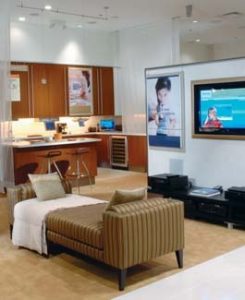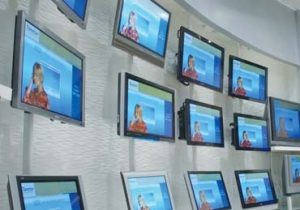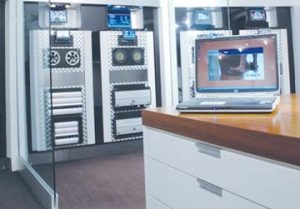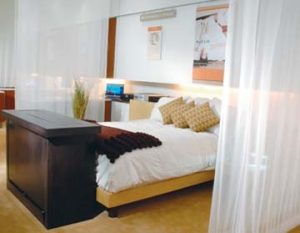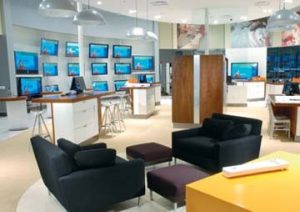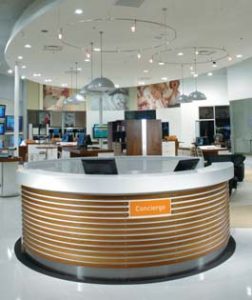When the first Tweeter store opened in1972, the iPod didn't exist, television screens were curved and audio and home entertainment systems featured something called 8-tracks.
But by the time digital music players, CDs and flat-panel screens hit the market, Tweeter (Canton, Mass.) had grown into a nationwide specialty retailer of mid- to high-end audio/video gear with a strong emphasis on customer service.
Its market, however, had changed, as well. Mass-merchandise discounters such as Wal-Mart and Target were now competitors, winning over shoppers on price. So specialty retailers like Tweeter had to fight the war through custom installation services. But retailers being squeezed in the middle, such as Best Buy, had also begun adding support and installation services. Tweeter's niche in the marketplace was being threatened. It had to ask itself, “Why would shoppers want to shop our stores?”
The answer, it found, was already there – in its emphasis on customer service. It just needed help from its internal design team and FRCH Design Worldwide (Cincinnati) to get that message out to shoppers.
“You go to Tweeter not just to buy a DVD player, but rather to buy the right solutions for your home,” says Christian Davies, FRCH's vp, design strategy and creative director. “From the beginning, we were tasked with not just redesigning an environment but also understanding how to communicate solution-selling to the consumer.”
Show Me the Possibilities
Advertisement
Inside Tweeter's new concept store in Summerlin, Nev., a planned community 12 miles from the Las Vegas strip, solution-based (rather than product-based) shopping is the mantra for a fresh environment that, in effect, turns the entire store into a selling tool for Tweeter's staff of “Home Entertainment Experts.” These specially trained employees work with shoppers to custom-design systems. As a demonstration of their abilities, they installed all of the store's electronic systems.
“Our goal was to create a meaningful experiential place,” says Paul Ryan, Tweeter's director of repositioning and retail prototype development. “In essence, the store becomes our diploma, an example of what we can do.”
Tweeter and FRCH want customers to feel at ease, to understand the breadth of possibilities and to be comfortable working with Tweeter staff to design a home or automotive entertainment system.
“We talked a lot about metaphorical spaces when we first conceived this environment,” says Davies. “We want people to be able to come here and feel as though it's a new way of shopping.”
To deliver that message, designers put a concierge desk at the front of the store, where staff can answer a quick question, set up store tours or give shoppers a map for a self-guided experience.
If the old Tweeter format was about showing as much equipment as possible – endless rows of product shelves and dark screening rooms – this new Tweeter is about openness, minimalism, clarity of message. But most importantly, it's showing what's possible in the world of consumer electronics.
Advertisement
“Shoppers don't know what they can do in their homes until you show it to them,” says Davies. “We needed an area in this store where consumers could mentally project their own homes into these scenarios, so we built an apartment inside the store.”
Lining the left side of the store is a series of rooms, delineated by sheer curtains and minimal furniture pieces, that suggest a living room, kitchen, bedroom, sports bar, children's room and outdoor area. On display in each area is equipment that seamlessly integrates into such living spaces – from in-wall speakers to TVs that rise from inside bedroom dressers. The underlying message: Today's consumer electronic equipment is no longer a series of black boxes and endless wires. Rather, it's invisible and integrated into your lifestyle.
“Our old stores didn't cue people to the design possibilities,” says Tweeter's Ryan. “This new store gives us the credentials to go to people's homes to do design. We want them to say, 'I didn't know that was possible.' “A neutral palette, including shades of olive green, white, tan and brown, appeals to both twenty-somethings shopping for their first DVD player and empty nesters looking to wire their homes with surround-sound. “We were extremely careful to make the aesthetic neutral enough that lots of different consumers could imagine this being their house,” says Davies.
Once through the apartment, shoppers come to the plasma wall, the only reference to Tweeter's old way of selling. Davies said the retailer wrestled with whether to use a comparative product display inside the new store, but in the end decided that it was an appropriate way to sell plasmas – plus it's a dynamic visual element.
The center of the store, dubbed the Design Studio, is where shoppers and employees sit down to turn inspiration and possibility into reality. Tables and computer terminals resemble an architect's work space, where specifications and product selection are laid out.
If shoppers aren't quite awed by the possibilities on display, the retailer has taken its experiential environment one step further, opening up the automotive install area so that customers can watch subwoofers and drop-down DVD players being installed into their cars. Or they can take a seat inside the home theater where seats are wired to movies shown on a 120-inch high-definition projection screen. Seats move in sync with the on-screen action, while a top-of-the-line surround sound system gives new meaning to the phrase home theater.
Advertisement
A band of graphic images runs overhead around the store, suggesting an “of-the-moment” lifestyle that is modern and fun. In the apartment, illustrated graphics designed by FRCH help customers locate products at work inside each space.
Another sign of Tweeter's innovative design capabilities is the use of HP's Digital Entertainment Center, built on the Windows Media Center PC platform. Music, movies, TV shows and digital photos can be accessed from one single component and displayed on screens located throughout the notional apartment rooms.
As consumers become more tech-savvy and electronics become an assumed part of everyone's lifestyle, Tweeter thinks its new format will enable it to stay competitive by providing customized solutions that help it stand apart from other electronics retailers.
“It's a shopping experience that invites customers to open up to the salespeople and tell them what they want, so that a custom solution can be found,” says Davies. “The result is consumers who are in rhapsody about this brand.”
The concierge desk at the entrance cues shoppers to the
service-oriented format.
Client: Tweeter Home Entertainment Group, Canton, Mass.
Sandy Bloomberg, chairman
Jeff Stone, president, ceo and coo
Mark Richardson, senior vp, marketing
David Rigas, director, retail merchandising
Kate Faucett, director of communications
Beth Konys, marketing director, finance and research
Paul Ryan, director of repositioning and retail prototype development
Design and Architect: FRCH Design Worldwide, Cincinnati
Christian Davies, vp, design strategy and creative director
Monica Gerhardt, brand strategist, senior account director
Mari Miura, senior interior designer
Cathleen Coleman, interior designer
Santiago Crespo, director, graphic design
Jeff Siegel, director, graphic design
Chad Witzel, senior graphic designer
Rob Rink, senior project architect
Kevin Gallagher, senior team leader
Lori Kolthoff, director, resource design
Outside Design Consultants: Retail Masters, Minneapolis
General Contractor: Coastal Pacific, Laguna Hills, Calif.
Audio/Visual: Tweeter Home Entertainment, Las Vegas
Ceilings: Armstrong, Lancaster, Pa.
Fixtures: Dimensions Cabinetry, Orlando
Flooring: Armstrong World Industries Inc., Lancaster, Pa.
Bentley Prince Street, Dayton, Ohio
Monterey, Indianapolis
Furniture: Mees Distributors, Cincinnati
Caser Technolito, Cincinnati
TWFCI (The Wholesale Furniture Collection Inc.), Fort Lauderdale, Fla.
Lighting: Lighting Management Inc., Harriman, N.Y.
Signage/Graphics: Harlan Graphic Arts Services Inc., Cincinnati
Wallcoverings and Materials: Architectural Systems Inc., New York
Fashion Wallcoverings, Cleveland
Innovations Wallcoverings, Powell, Ohio
D.L. Couch, Newscastle, Ind.
Wolf Gordon, Lakewood, Ohio
Knoll Textiles, East Greenville, Pa.
Wall Treatements and Fixturing: Feature Presentations, Orlando
Photography: Mark Steele, Mark Steele Photography, Columbus, Ohio


 Headlines2 weeks ago
Headlines2 weeks ago
 Eric Feigenbaum1 week ago
Eric Feigenbaum1 week ago
 Headlines6 days ago
Headlines6 days ago
 Headlines1 week ago
Headlines1 week ago
 Headlines2 weeks ago
Headlines2 weeks ago
 Headlines1 week ago
Headlines1 week ago
 Designer Dozen2 weeks ago
Designer Dozen2 weeks ago
